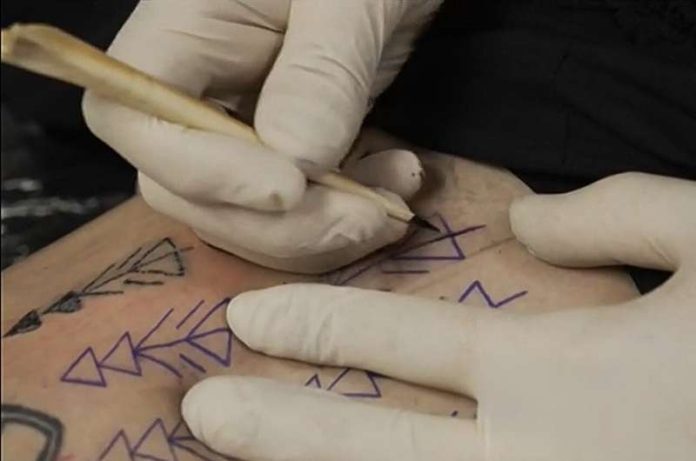
Discovering how Ötzi the Iceman, a man who lived over 5,300 years ago, got his tattoos has puzzled scientists and historians alike.
Ötzi’s well-preserved body, discovered by hikers in the Italian Alps in 1991, displayed an array of tattoos across his lower back, abdomen, legs, and wrist.
The nature of these tattoos and how they were applied has been a subject of much speculation.
Initially, researchers proposed several methods for how these tattoos might have been created, including hand poking, subdermal tattooing, hand tapping, and incision.
Each technique has its own characteristics and historical context, making the investigation into Ötzi’s tattoos a fascinating journey into ancient practices.
In a groundbreaking study published in the European Journal of Archaeology, an international team of experts, including archaeologists, historians, and tattoo artists, embarked on a unique experiment.
They aimed to replicate Ötzi’s tattoos on modern skin using each of the proposed methods to determine which technique most likely accounted for the patterns observed on Ötzi’s skin.
The experiment involved a tattoo artist voluntarily receiving tattoos on his leg, mirroring those found on Ötzi, utilizing the four different techniques.
After allowing the tattoos to heal, detailed comparisons were made between the newly created tattoos and those on Ötzi’s ancient skin.
The findings revealed that the tattoos made by the hand-poking method bore the closest resemblance to those on Ötzi. This technique involves using a sharpened stick, dipped in ink, to pierce the skin, depositing the ink with each puncture.
To form a continuous line, multiple adjoining punctures are made, leaving a trail of tiny, overlapping disks of ink under the skin.
This specific pattern matched what was observed on Ötzi’s tattoos, providing compelling evidence that this was the technique used thousands of years ago.
This research not only offers insights into the tattooing practices of Ötzi’s time but also highlights the sophistication and skill of ancient tattoo artists.
Their ability to create enduring body art with the limited technology available is a testament to the rich cultural traditions of the past.
As we uncover more about Ötzi and his life, we gain valuable perspectives on the people who lived during his era, their practices, beliefs, and the everyday challenges they faced.
The research findings can be found in European Journal of Archaeology.
Copyright © 2024 Knowridge Science Report. All rights reserved.




